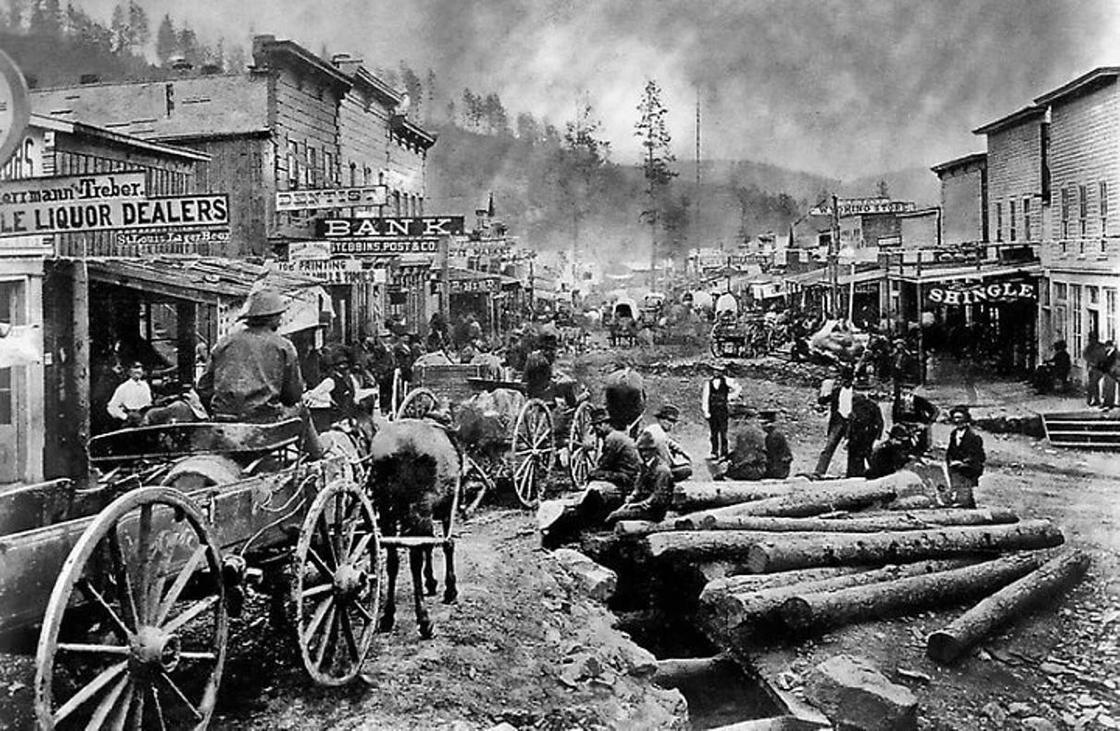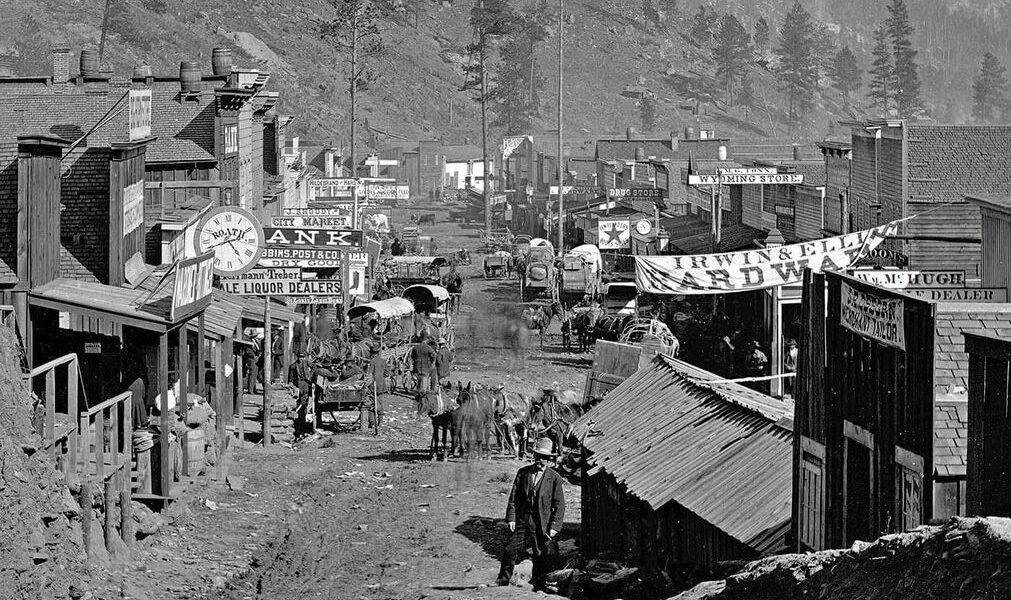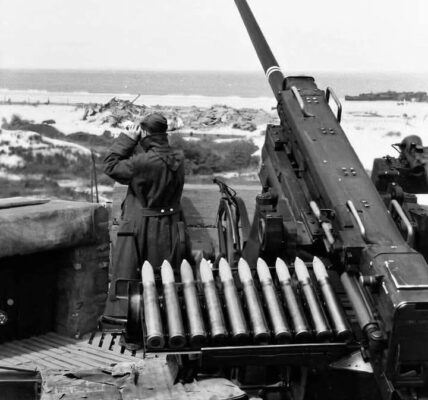Looking Down Main Street of the Rugged Wild West Town of Deadwood, Dakota Territory, 1877

In 1877, the town of Deadwood, deep in the Dakota Territory, stood as a vivid symbol of the Wild West. Rising to prominence as a bustling hub for gold prospectors, gunslingers, entrepreneurs, and adventurers, it embodied both chaos and opportunity. A glance down Deadwood’s Main Street at the time would reveal a lively scene: dusty roads, horse-drawn carriages, crowded saloons, and armed cowboys prepared for anything.

The Gold Rush and the Rise of Deadwood
Deadwood was founded in 1876 during the Black Hills Gold Rush, drawing thousands of fortune seekers hoping to strike it rich. The nearby gold mines quickly became hotspots, leading to the town’s rapid development. Within a short time, Main Street was lined with general stores, barbershops, saloons, gambling halls, and hotels catering to miners and settlers alike.

Lawlessness and Danger
Unlike many Western towns, Deadwood was built on land that legally belonged to the Lakota people under the 1868 Fort Laramie Treaty. However, the gold discovery led to an influx of illegal settlers, and without official government jurisdiction, the town quickly descended into lawlessness. Robberies, shootouts, and scams were commonplace, making Deadwood one of the most dangerous places in the West.

Legends of Deadwood
Deadwood was not just a town of prospectors—it was also home to legendary figures of the Wild West. Wild Bill Hickok, the infamous gunslinger, was murdered in a saloon here in 1876 while holding what became known as the “Dead Man’s Hand” in poker. Calamity Jane, a fearless frontierswoman, also roamed these streets, adding to Deadwood’s legendary status.

Deadwood’s Legacy
Today, Deadwood is a preserved historic site, attracting visitors eager to experience the rugged past of the American frontier. The streets that once witnessed gunfights and outlaw chases now serve as a living museum, keeping the spirit of the Wild West alive for generations to come.

